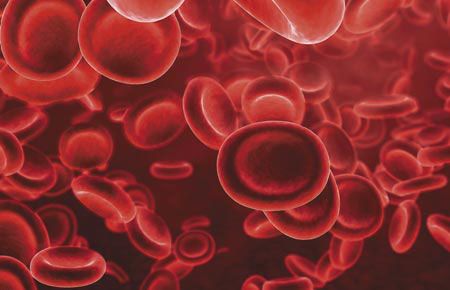Blood products in the trenches of transfusion medicine
From performing blood typing to administering blood transfusions, here are the blood products you should have on hand in your veterinary hospital.

Photo: Shutterstock.comIt (almost) goes without saying: Administering blood products can be beneficial, especially to critical patients. Here's a look at the different types blood products and when these products are indicated for patients.
What's their type?
Blood typing is an important step in the transfusion process. For instance, a canine blood donor that has never received a blood transfusion is considered to be a universal donor if they are DEA 1 negative. To further identify which blood type a donor or a transfusion recipient might be, use blood typing cards. Bedside agglutination cards are available from DMS laboratories, The Rapid Vet Company, available from DMS Laboratories (Rapid Vet-H). This rapid crossmatching system is reliable when performed properly.
Remember, even though a blood type has been performed on the recipient and donor, it should never take the place of performing a crossmatch before the transfusion to ensure the two are compatible.
Fresh whole blood (FWB) is a unit of blood that has been obtained less than eight hours before administration. It contains all the cellular and plasma components of the blood. It is to be administered to patients who are in need of red blood cells, plasma and platelets.
Keep in mind that stored whole blood still contains all the cellular and plasma components of the blood except platelets. Store it at 39.2 F (4 C) and give it an expiration date of 28 days. This is used in patients that are anemic and hypoproteinemic.
Packed red blood cells (pRBC) is a unit of blood that has had the red blood cells separated from the plasma content within eight hours of collection. Much like FWB, this blood component should be stored at 39.2 F (4 C). Give pRBC an expiration date of 42 days. The most common indication for a pRBC transfusion is anemia.
Fresh frozen plasma (FFP) is a unit of blood that has been separated from red blood cells and the plasma components are remaining. FFP is viable for up to one year when it is stored in temperatures of -4 to -40 F (-20 to -40 C). All coagulation factors, albumin and protein are present in this component. A common indication for use is in primary or secondary coagulopathies. FFP transfusions also benefit patients with acute pancreatitis, disseminated intravascular coagulation (DIC), liver failure, rodenticide toxicosis and parvovirus.
Frozen or stored plasma is frozen plasma that has been stored at temperatures of -4 to -40 F (-20 to -40 C) for more than one year. It is viable for up to two years. Stored plasma no longer contains coagulation factors. Indications for this component include hypoproteinemia and hypoalbuminemia.
Other blood products such as cryoprecipitate, cryoprecipitate-poor plasma and platelet-rich plasma are also available as component therapy. Commonly those types of components are obtained from commercial blood banks due to the infrequency of use and cost associated with preparing the product. Cryoprecipitate contains high levels of fibrinogen, fibronectin, factor VIII and von Willebrand factor. It is indicated in patients with coagulopathies due to any of the above plasma protein deficiencies. Cryoprecipitate-poor plasma is indicated in patients that are hypoproteinemic but the risk of synthetic plasma expanders outweighs the benefit. Platelet-rich plasma is only viable for five days at a constant agitation. Most commercial blood banks offer platelet-rich plasma.